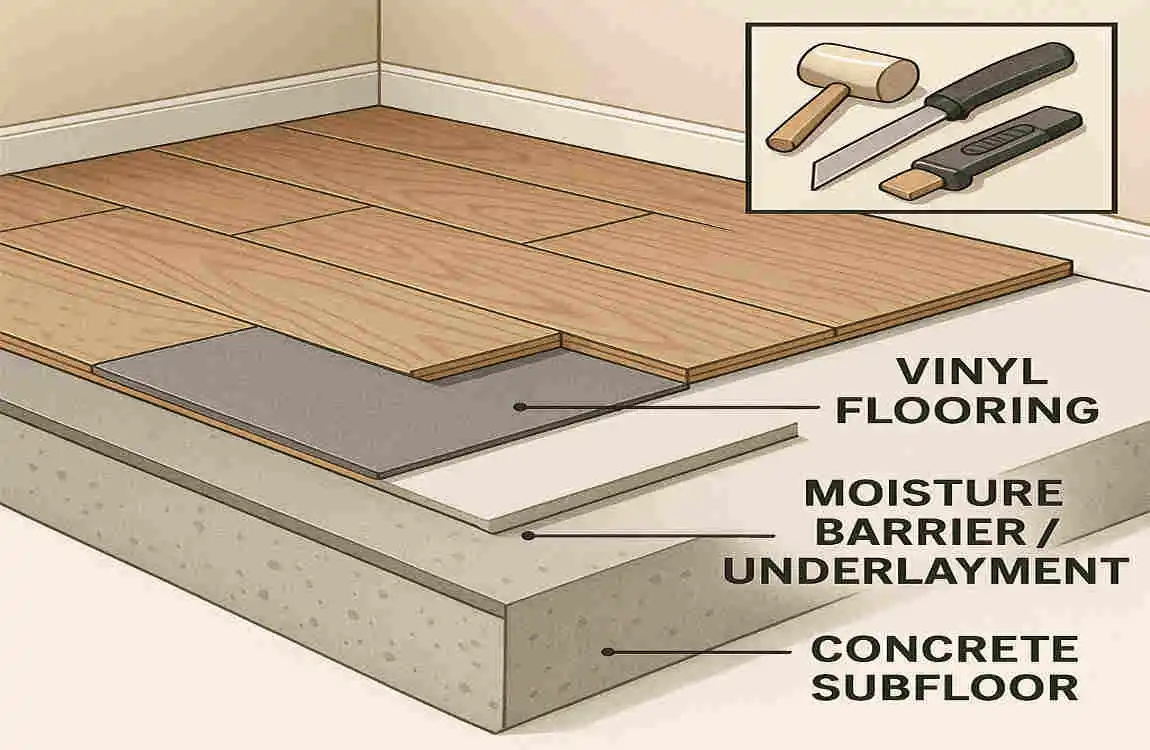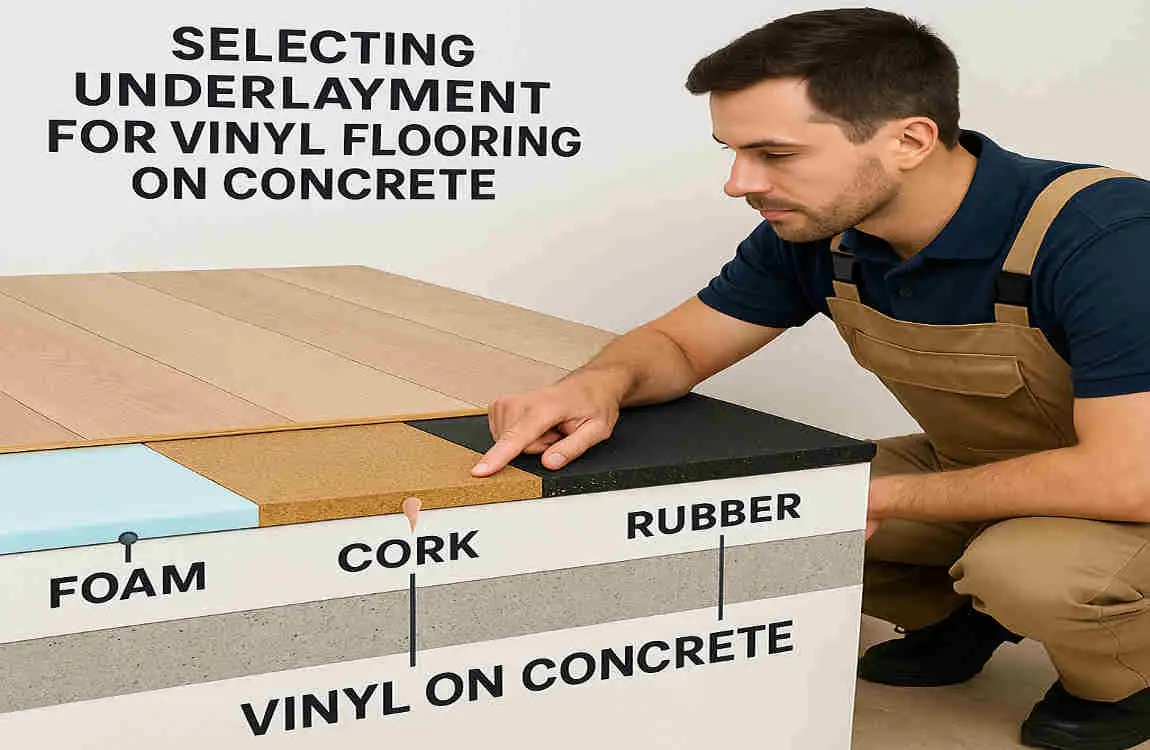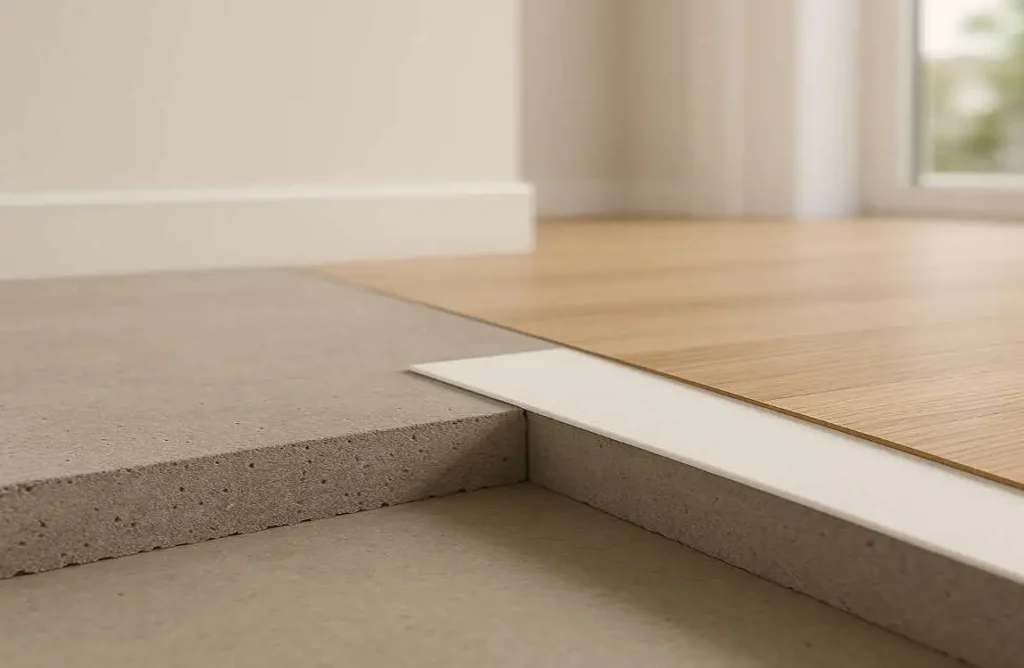Vinyl flooring has become increasingly popular in homes due to its affordability, durability, and wide range of design options. Whether you’re renovating your living room or updating your kitchen, vinyl flooring offers a practical and stylish solution. However, to ensure your vinyl house flooring looks great and lasts for years, proper installation is crucial. One question that often arises is, “Do I need underlayment for vinyl flooring on concrete?”
Understanding Vinyl Flooring and Concrete Subfloors

Before we dive into the topic of underlayment, let’s take a closer look at vinyl flooring and concrete subfloors. Vinyl flooring comes in several types, including luxury vinyl plank (LVP), sheet vinyl, and vinyl tile. Each type offers unique benefits and can replicate the look of natural materials, such as wood or stone. Concrete subfloors, commonly found in residential homes, provide a stable base for your flooring. However, installing vinyl directly on concrete can present several challenges, including moisture issues, unevenness, and temperature fluctuations.
Types of Vinyl Flooring
- Luxury Vinyl Plank (LVP)
- Sheet Vinyl
- Vinyl Tile
What is Underlayment?
Underlayment is a thin layer of material placed between your sub house floor and your vinyl flooring. Its primary purpose is to provide a smooth, even surface for your flooring, while offering additional benefits such as moisture protection, comfort, soundproofing, and insulation. Some common types of underlayment suitable for vinyl flooring include foam, cork, rubber, and moisture barriers. By installing underlayment, you can ensure your vinyl flooring looks and performs its best on concrete.
Do I Need Underlayment for Vinyl Flooring on Concrete?
The answer to this question depends on several factors, including the condition and moisture level of your concrete subfloor, the type of vinyl flooring you’re installing, and your desired level of comfort and sound control.
When Underlayment is Necessary
In certain situations, installing underlayment is crucial for the success of your vinyl flooring project. Here are some scenarios where underlayment is necessary:
- High moisture conditions: If your concrete subfloor has high moisture levels, installing a moisture barrier is essential to prevent damage to your vinyl flooring.
- Uneven or rough concrete surfaces: Underlayment can help smooth out minor imperfections in your concrete subfloor, creating a more even surface for your vinyl flooring.
- Added warmth or sound control: If you want to improve the thermal insulation or reduce noise transmission, underlayment can help achieve these goals.
It’s important to note that national and manufacturer installation guidelines may require underlayment for certain types of vinyl flooring or specific subfloor conditions. Always consult the warranty and installation instructions provided by your vinyl flooring manufacturer.
When Underlayment May Not Be Required
In some cases, you can install vinyl flooring directly on concrete without underlayment. If your concrete subfloor is smooth, level, and has low moisture content, you can skip the underlayment. However, it’s crucial to assess your specific situation and consult with a modern flooring house professional to ensure the best results.
How to Choose the Right Underlayment for Vinyl on Concrete

When selecting underlayment for your vinyl flooring on concrete, consider the following factors:
- Moisture protection: If moisture is a concern, choose a moisture barrier underlayment to protect your vinyl flooring from potential damage.
- Insulation value (R-factor): Higher R-factor underlayments provide better thermal insulation, which can help keep your floors warmer in colder climates.
- Durability and thickness: Choose an underlayment with the appropriate thickness and durability for your specific vinyl flooring type and subfloor conditions.
- Cost vs. long-term benefits: While underlayment adds to the overall cost of your flooring project, it can provide long-term benefits in terms of comfort, durability, and moisture protection.
Some popular underlayment brands and products for vinyl on concrete include:
Brand Product Features
MP Global Quiet Walk Plus Moisture protection, sound reduction, thermal insulation
Roberts Serenity Foam Moisture barrier, sound absorption, comfort
Floor Muffler Ultrason Moisture protection, sound reduction, thermal insulation
Step-by-Step Installation Guide
- Prepare the concrete subfloor: Clean the concrete surface, repair any cracks or damage, and ensure it is level. Perform a moisture test to determine if a moisture barrier is necessary.
- Install moisture barriers (if required): If your moisture test indicates high levels, install a moisture barrier underlayment according to the manufacturer’s instructions.
- Lay down the underlayment: Unroll the underlayment and trim it to fit the room, leaving a small gap around the perimeter for expansion. Use tape to secure the seams and prevent shifting.
- Install vinyl flooring: Follow the manufacturer’s instructions for installing your specific type of vinyl flooring over the underlayment. Use the recommended adhesive and allow adequate time for it to dry.
- Tips for success: Ensure proper adhesion by following the manufacturer’s guidelines for temperature, humidity, and drying time. Use a roller to press the vinyl flooring into the adhesive and remove any air bubbles.
Maintenance and Care with Underlayment
Proper maintenance and care can help prolong the life of your vinyl flooring and underlayment. Here are some tips:
- Regular cleaning: Sweep or vacuum your vinyl flooring regularly to remove dirt and debris. Use a damp mop with a mild cleaning solution for deeper cleaning.
- Prevent damage: Place mats at entrances to catch dirt and moisture, and use furniture pads to prevent scratches and indentations.
- Repair and replace: If your vinyl flooring or underlayment becomes damaged, address the issue promptly to avoid further damage. In some cases, you may need to replace the affected area.
By following these maintenance tips, you can enjoy your beautiful vinyl flooring for years to come.
